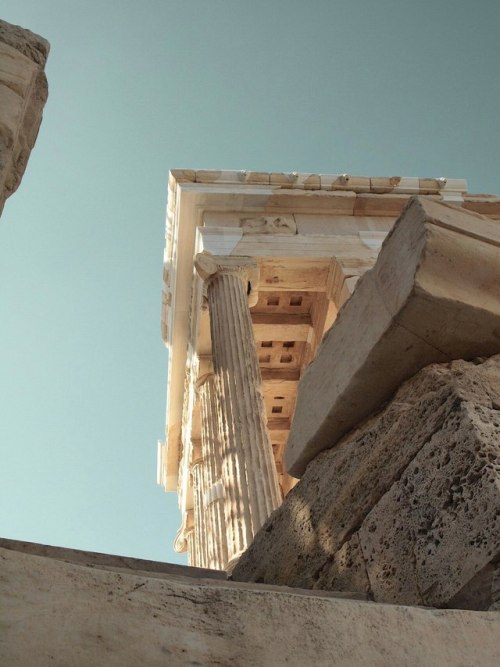#ancient greece
god i love reading about stupid drama in ancient greece. like there was an athlete named theagenes who was so good at every kind of athletic contest that when he died, one of his opponents would go to beat the shit out of a statue of him out of spite, but then one day the statue fell on the guy and killed him so the greeks took the statue to court for murder, convicted it, and threw it into the sea
actually i left out the best part of this story which is that a plague then struck and when people consulted the oracle at delphi she was like “well you’ve pissed of theagenes” so they had to go dig the statue back up out of the fucking water

Agamemnonby Aiskhylos (tr. Anne Carson)
Text ID:
Dreams bring him grief or delusional joy—
Lakonian Black-figure kylix, attributed to the Boreads Painter, ca. 570–565 BCE, currently in Malibu, Getty 85.AE.121.
Bellerophon slaying the Chimaera with Pegasus.
I’ve noticed how rarely Lakonian vase painting is mentioned when discussing Greek pottery, though I find it to be some of the most visually striking and distinctive pottery from Greece! Unlike the Athenians who limit their interior kylix decorations to a smaller tondo within the cup, the Lakonians use up almost all of the interior space of a kylix. This results in these huge images that would come within inches from someones face while they drank from their cups. This is an aspect of Greek pottery that I find to be commonly overlooked–that these objects were meant to be used and and interacted with, not just admired from a distance.
Post link
Red-figure psykter, signed by Douris, ca. 500–470 BCE. London, British Museum 1868,0606.7.
This is my personal favorite piece of Greek art! Its full of peculiarities, like the satyr wearing a patterned chlamys and Thracian boots while carrying a kerykeion. He is meant to parody the god Hermes, which is something Douris tends to do.
The vessel itself is also quite extraordinary! It seems likely that it would have been filled with ice and then placed into a krater in order to chill wine. This shape, however, was only produced for a few decades, during the transition from the sixth into the fifth century.
Post link
Satyr statuette or applique, probably originally attached to the base of a larger bronze statue, ca. 160–150 BCE. Berlin, Antikensammlung Misc. 7466.
The youthful satyr carries a set of panspipes in his right hand as he defends himself with his left hand which probably originally held a lagobolon, a type of stick that was used to hunt rabbits.
It was common for Hellenistic satyrs to carry a lagobolon, but here this youthful satyr defends himself in a pose known as the Harmodios blow. This pose comes from the classical sculpture group of the Tyrannicides, Harmodios and Aristogeiton by sculptors Kritios and Nesiotes. Aside from his pose, the delicate and youthful form of the satyr certainly alludes to Harmodios, who was the eromenos of Aristogeiton.
Post link
Red-figure calyx-krater, attributed to Euphronios, ca. 500 BCE. Berlin, Antikensammlung F2180.
This is an athletic scene, and the figure to the far left is infibulating himself. This was a practice where men would tie their foreskin shut with a string known as a kynodesme (κυνοδέσμη) before they exercised out of politeness. While this practice is mostly associated with athletes, older symposiasts are also shown on pottery as infibulated.
Post link






